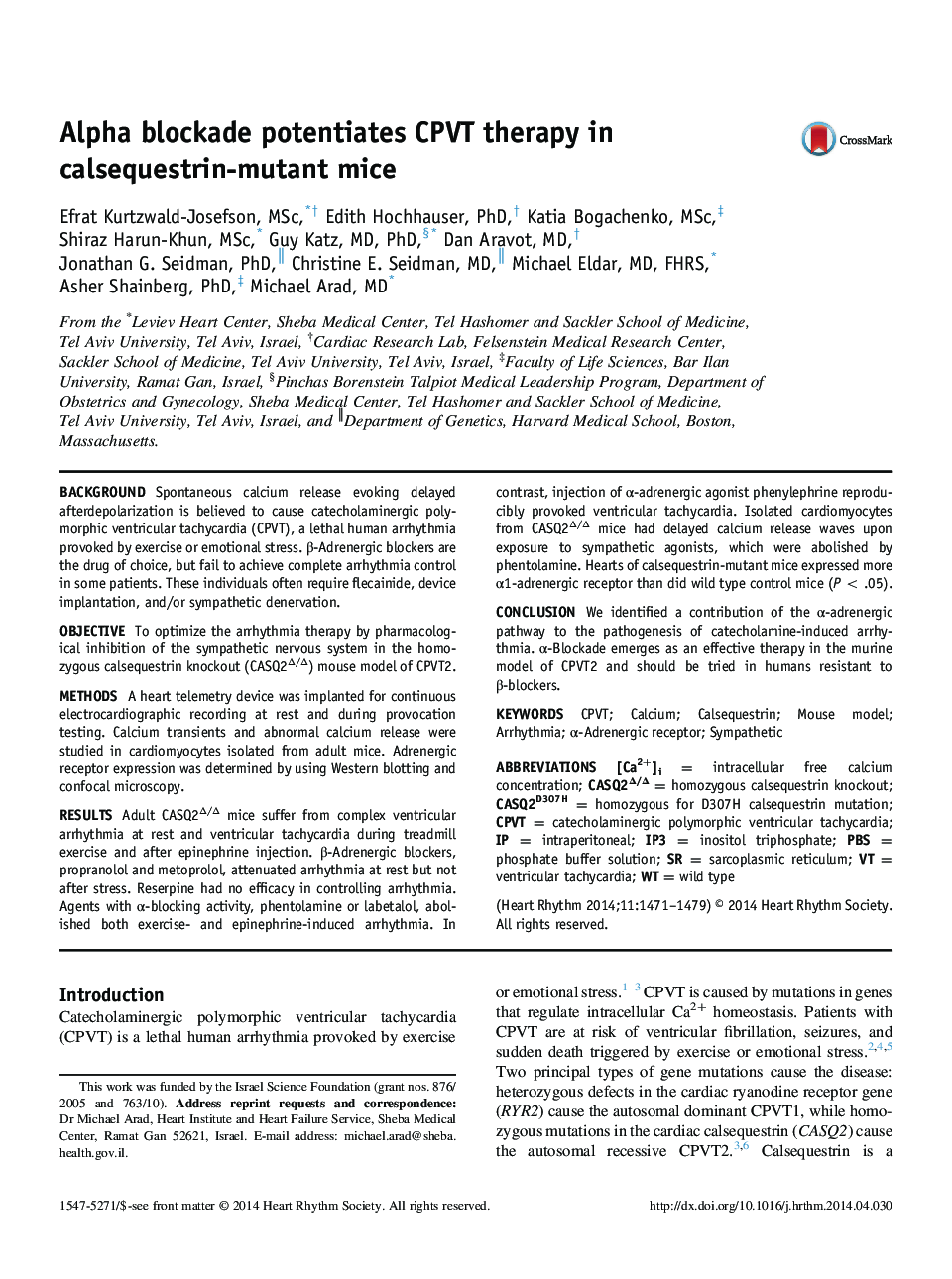| کد مقاله | کد نشریه | سال انتشار | مقاله انگلیسی | نسخه تمام متن |
|---|---|---|---|---|
| 2922044 | 1175827 | 2014 | 9 صفحه PDF | دانلود رایگان |

BackgroundSpontaneous calcium release evoking delayed afterdepolarization is believed to cause catecholaminergic polymorphic ventricular tachycardia (CPVT), a lethal human arrhythmia provoked by exercise or emotional stress. β-Adrenergic blockers are the drug of choice, but fail to achieve complete arrhythmia control in some patients. These individuals often require flecainide, device implantation, and/or sympathetic denervation.ObjectiveTo optimize the arrhythmia therapy by pharmacological inhibition of the sympathetic nervous system in the homozygous calsequestrin knockout (CASQ2Δ/Δ) mouse model of CPVT2.MethodsA heart telemetry device was implanted for continuous electrocardiographic recording at rest and during provocation testing. Calcium transients and abnormal calcium release were studied in cardiomyocytes isolated from adult mice. Adrenergic receptor expression was determined by using Western blotting and confocal microscopy.ResultsAdult CASQ2Δ/Δ mice suffer from complex ventricular arrhythmia at rest and ventricular tachycardia during treadmill exercise and after epinephrine injection. β-Adrenergic blockers, propranolol and metoprolol, attenuated arrhythmia at rest but not after stress. Reserpine had no efficacy in controlling arrhythmia. Agents with α-blocking activity, phentolamine or labetalol, abolished both exercise- and epinephrine-induced arrhythmia. In contrast, injection of α-adrenergic agonist phenylephrine reproducibly provoked ventricular tachycardia. Isolated cardiomyocytes from CASQ2Δ/Δ mice had delayed calcium release waves upon exposure to sympathetic agonists, which were abolished by phentolamine. Hearts of calsequestrin-mutant mice expressed more α1-adrenergic receptor than did wild type control mice (P < .05).ConclusionWe identified a contribution of the α-adrenergic pathway to the pathogenesis of catecholamine-induced arrhythmia. α-Blockade emerges as an effective therapy in the murine model of CPVT2 and should be tried in humans resistant to β-blockers.
Journal: Heart Rhythm - Volume 11, Issue 8, August 2014, Pages 1471–1479